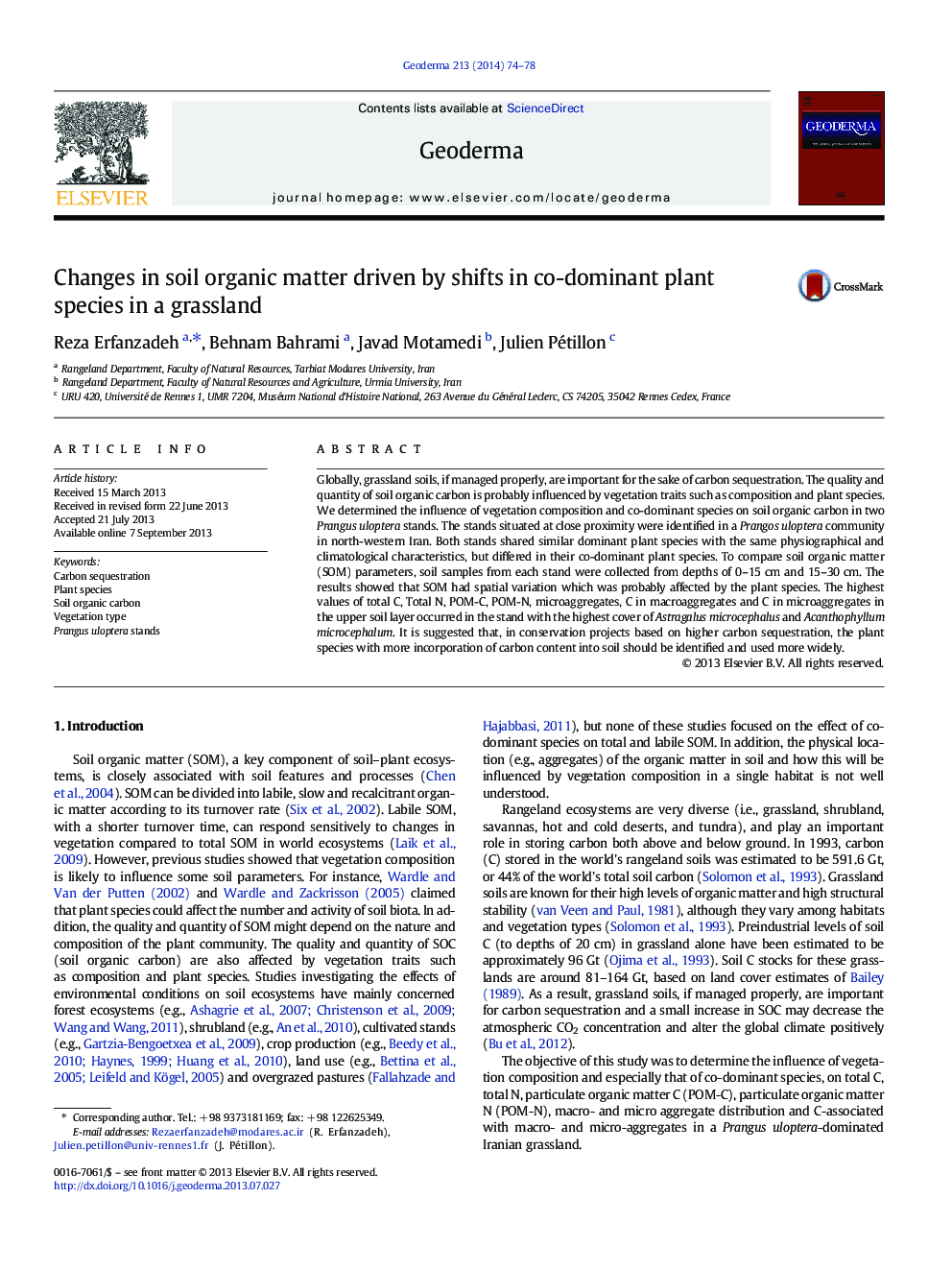| Article ID | Journal | Published Year | Pages | File Type |
|---|---|---|---|---|
| 6408928 | Geoderma | 2014 | 5 Pages |
â¢We determined the influence of co-dominant plant species on soil organic carbon.â¢Two stands were identified in a Prangos uloptera community.â¢Labile soil organic matter, total C and N were different between the two stands.â¢We should identify the plant species which can add higher carbon content to soil.
Globally, grassland soils, if managed properly, are important for the sake of carbon sequestration. The quality and quantity of soil organic carbon is probably influenced by vegetation traits such as composition and plant species. We determined the influence of vegetation composition and co-dominant species on soil organic carbon in two Prangus uloptera stands. The stands situated at close proximity were identified in a Prangos uloptera community in north-western Iran. Both stands shared similar dominant plant species with the same physiographical and climatological characteristics, but differed in their co-dominant plant species. To compare soil organic matter (SOM) parameters, soil samples from each stand were collected from depths of 0-15Â cm and 15-30Â cm. The results showed that SOM had spatial variation which was probably affected by the plant species. The highest values of total C, Total N, POM-C, POM-N, microaggregates, C in macroaggregates and C in microaggregates in the upper soil layer occurred in the stand with the highest cover of Astragalus microcephalus and Acanthophyllum microcephalum. It is suggested that, in conservation projects based on higher carbon sequestration, the plant species with more incorporation of carbon content into soil should be identified and used more widely.
